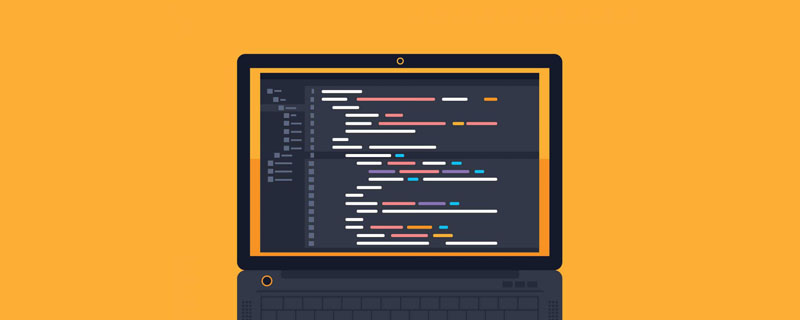Difference: 1. XHTML must be nested correctly, html does not need to; 2. XHTML elements must be closed, html does not need to; 3. XHTML tag names must use lowercase letters, html does not need to; 4. XHTML The document must have a root element; 5. XHTML needs to add alt attributes to images, but html does not.

The operating environment of this tutorial: Windows 7 system, HTML5 version, Dell G3 computer.
HTML and XHTML
Extensible Hypertext Markup Language Language) as a standard redefined for XML applications.
There are two syntaxes defined in the HTML5 standard (HTML 4.01 and XHTML 1). This standard can be used to XHTML by defining a special DOCTYPE tag, but not many browsers implement this standard. So in the end the HTML5 standard overturned this decision.
You can indicate the choice of syntax by changing the MIME type (Content-Type included in the HTTP request): if you need to use XHTML, the MIME type should be application/xhtml xml, otherwise the MIME type should be text/html Use XHTML.
The appropriate MIME type must be present in the Content-Type in the HTTP request. If you only write the MIME type in the HTML tag, such as , it will still be executed as text/html.
The difference between xhtml and html
1. XHTML elements must be nested correctly
Example:
General html web pages can be "main content" This is not strict and is wrong in XHTML; correct in xhtml The standard must require such "main content".
2. XHTML elements must be closed
exp:
An example in HEAD, " " Tags like this are feasible in HTML, but for the sake of xhtml standards, they must be closed such as " "
For example, when using the "
" line break tag in general HTML, many people just add a "
" tag to the paragraph that needs to be broken, but in the XHTML CSS standard, it must be like this " < ;p>Paragraph text
” means that it must start with the line break tag “” before the article text field, and end with the “
” tag after the paragraph text.For example, many people use the small line break tag "br" when making html pages. Many people don't know that this tag needs to be wrapped in a closed style. For example: after a paragraph of text, a line break is required. Many CSS productions require line breaks. It would be nice to add a "
" here, but let me tell you that this is also non-standard. It will not pass during XHTML verification and must be closed with "
".
3. Tag names must use lowercase letters
In previous web pages, many tags were usually arranged in uppercase or lowercase letters, but for the sake of WEB standards, tags now require uniform lowercase letters. .
exp:
In the past, many ",
" were used in uppercase or mixed case, such as ", " or " , ” typesetting, but XHTML unified requirements need to use “ , ” in lowercase.4. XHTML documents must have root elements
It means that as soon as a tag starts, it must end with a tag. For example, when
starts, it must be closed with at the end of the content.5 , For pictures, you need to add the alt attribute
In the past, you could add or not add the alt attribute to the img tag of the image displayed on the web page, but now xhtml requires that the alt attribute must be added, otherwise the xhtml verification will prompt Error, even if the value of alt is empty.
exp:
Error<img src="image%20address" alt="What is the difference between xhtml and html" >
Correct<img src="Picture%20address" alt="Picture description">
What are the benefits of adding alt? Answer: Adding alt can provide a text description for the image, allowing search engines to identify the content of the image, which is a good place to optimize web pages.
Recommended tutorial: "html video tutorial"
The above is the detailed content of What is the difference between xhtml and html. For more information, please follow other related articles on the PHP Chinese website!
 HTML超文本标记语言--超在那里?(文档分析)Aug 02, 2022 pm 06:04 PM
HTML超文本标记语言--超在那里?(文档分析)Aug 02, 2022 pm 06:04 PM本篇文章带大家了解一下HTML(超文本标记语言),介绍一下HTML的本质,HTML文档的结构、HTML文档的基本标签和图像标签、列表、表格标签、媒体元素、表单,希望对大家有所帮助!
 web前端笔试题库之HTML篇Apr 21, 2022 am 11:56 AM
web前端笔试题库之HTML篇Apr 21, 2022 am 11:56 AM总结了一些web前端面试(笔试)题分享给大家,本篇文章就先给大家分享HTML部分的笔试题(附答案),大家可以自己做做,看看能答对几个!
 HTML5中画布标签是什么May 18, 2022 pm 04:55 PM
HTML5中画布标签是什么May 18, 2022 pm 04:55 PMHTML5中画布标签是“<canvas>”。canvas标签用于图形的绘制,它只是一个矩形的图形容器,绘制图形必须通过脚本(通常是JavaScript)来完成;开发者可利用多种js方法来在canvas中绘制路径、盒、圆、字符以及添加图像等。
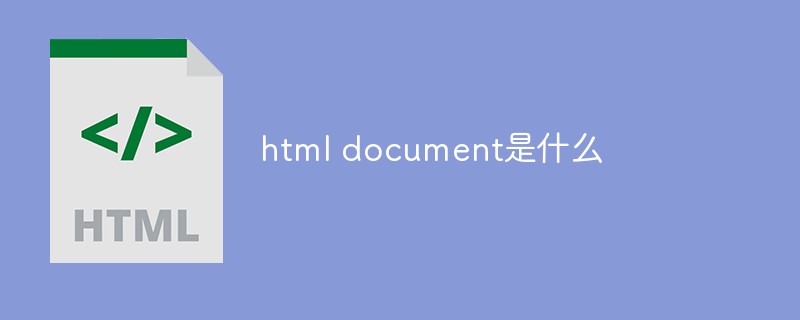 html中document是什么Jun 17, 2022 pm 04:18 PM
html中document是什么Jun 17, 2022 pm 04:18 PM在html中,document是文档对象的意思,代表浏览器窗口的文档;document对象是window对象的子对象,所以可通过“window.document”属性对其进行访问,每个载入浏览器的HTML文档都会成为Document对象。
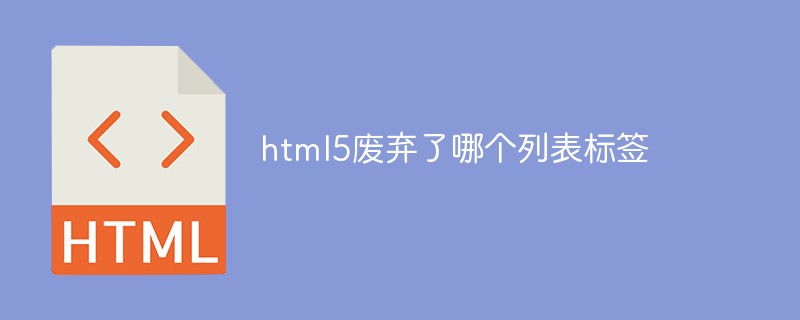 html5废弃了哪个列表标签Jun 01, 2022 pm 06:32 PM
html5废弃了哪个列表标签Jun 01, 2022 pm 06:32 PMhtml5废弃了dir列表标签。dir标签被用来定义目录列表,一般和li标签配合使用,在dir标签对中通过li标签来设置列表项,语法“<dir><li>列表项值</li>...</dir>”。HTML5已经不支持dir,可使用ul标签取代。
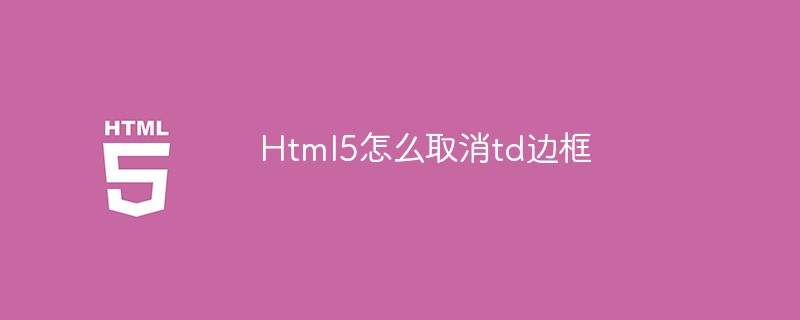 Html5怎么取消td边框May 18, 2022 pm 06:57 PM
Html5怎么取消td边框May 18, 2022 pm 06:57 PM3种取消方法:1、给td元素添加“border:none”无边框样式即可,语法“td{border:none}”。2、给td元素添加“border:0”样式,语法“td{border:0;}”,将td边框的宽度设置为0即可。3、给td元素添加“border:transparent”样式,语法“td{border:transparent;}”,将td边框的颜色设置为透明即可。
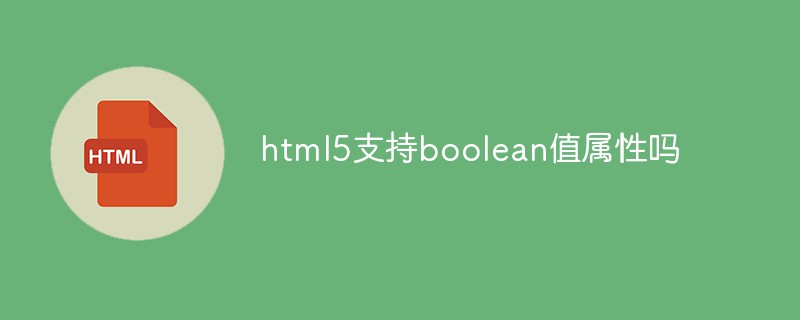 html5支持boolean值属性吗Apr 22, 2022 pm 04:56 PM
html5支持boolean值属性吗Apr 22, 2022 pm 04:56 PMhtml5支持boolean值属性;boolean值属性指是属性值为true或者false的属性,如input元素中的disabled属性,不使用该属性表示值为flase,不禁用元素,使用该属性可以不设置属性值表示值为true,禁用元素。


Hot AI Tools

Undresser.AI Undress
AI-powered app for creating realistic nude photos

AI Clothes Remover
Online AI tool for removing clothes from photos.

Undress AI Tool
Undress images for free

Clothoff.io
AI clothes remover

AI Hentai Generator
Generate AI Hentai for free.

Hot Article

Hot Tools

SecLists
SecLists is the ultimate security tester's companion. It is a collection of various types of lists that are frequently used during security assessments, all in one place. SecLists helps make security testing more efficient and productive by conveniently providing all the lists a security tester might need. List types include usernames, passwords, URLs, fuzzing payloads, sensitive data patterns, web shells, and more. The tester can simply pull this repository onto a new test machine and he will have access to every type of list he needs.

MinGW - Minimalist GNU for Windows
This project is in the process of being migrated to osdn.net/projects/mingw, you can continue to follow us there. MinGW: A native Windows port of the GNU Compiler Collection (GCC), freely distributable import libraries and header files for building native Windows applications; includes extensions to the MSVC runtime to support C99 functionality. All MinGW software can run on 64-bit Windows platforms.

SublimeText3 Mac version
God-level code editing software (SublimeText3)

SAP NetWeaver Server Adapter for Eclipse
Integrate Eclipse with SAP NetWeaver application server.

Zend Studio 13.0.1
Powerful PHP integrated development environment





